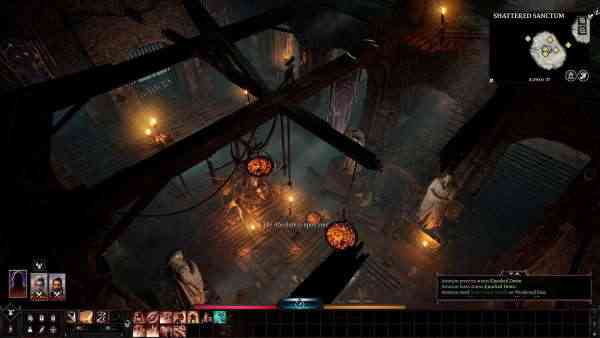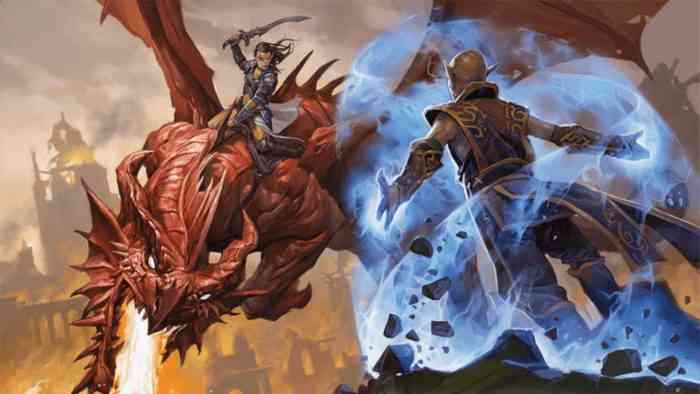Baldur’s Gate 3: Your D&D Campaign Will Never Look the Same
The first time I tried to DM and game of Dungeons & Dragons was in 1998. The game was still on its Second Edition and I had no idea what I was doing (we still had a fun time). Third Edition came out in 2000 and Neverwinter Nights was released for PC two years after that. That early Bioware game forever influenced my Dungeons & Dragons games- the stories I wanted to tell, the locations I wanted to explore and most importantly, how I understood the rules. Now there’s a new edition of D&D, and a new video game that’s set to leave its mark on players and DMs.
Baldur’s Gate 3 is based on the Fifth Edition rules to Dungeons and Dragons. People have been using those rulebooks since 2014, and I think they’re pretty great. (I participated in the playtest, so I may be somewhat predisposed to liking them). I don’t think its unfair to say that Fifth Edition is a bit more simple than the versions that proceeded it, but Wizards of the Coast did their utmost to include what they saw as essential parts of the game. There’s no D&D without saving throws. You gotta have feats. But the whole tone of the game shifted. Instead of rewarding players for understanding every obscure rule to combat, 5e is built to be more flexible.
There are certain inescapable exceptions to this though. It may not be clear to a new player for example, that Magic Missile is an attack spell that automatically hits, no accuracy roll necessary. It takes a while to get a grasp on the ins and outs of attacks of opportunity. Forgetting some of these rules won’t scuttle a game, but comfort with them leads to viable strategies, and who doesn’t want to feel like a tactical genius?
Having a computer as a dungeon master can be brutal. The DM leaves no wiggle room, fudges no numbers. The rules become ironclad, and the numbers become absolute. As such, all the little quirks in the computer adaptation can leave a lasting impression, believe me. The best spells in Neverwinter Nights became my favorite spells in the tabletop game. I became a rules stickler for concepts that were clearly conveyed on PC, while allowing a lot more latitude on things that I was still figuring out. Every DM is different, but let’s take a look at some of the ways Baldur’s Gate is set to change the game.
Bonus Actions

When explaining what you can do in a turn of D&D, most people will explain that you get “a move action and a standard action.” New players here that as “I can do two things on a turn.” Later it becomes clear that many spells and abilities can be used as “bonus actions,” and you can do a third thing on each of your turns. BG3 is so challenging that not using a bonus action is a huge opportunity wasted.
Now, in the official rules, shoving someone is a full action, meaning you can do it instead of a regular attack. Larian has changed that in their game- pushing someone, dipping your weapon, and jumping are all bonus actions. This creates some really cool and dynamic combat strategies. Is there a goblin balanced on the edge of a balcony? Move towards them, hit with a regular attack and then try your bonus shove. That’s two sources of damage and you get to ruin a creature’s positioning!
Vertical Encounters

The Fourth Edition of D&D tried to be a little closer to a wargame, like Warhammer. 5e made the game more versatile with different gaming pieces, including none at all, allowing combat to take place in the “theater of the mind.” I’ve personally used my Chessex wet-erase battle mat for years, and a combination of board game junk and markers to represent terrain. Combat encounters in BG3 are extremely vertical- there are often cliffs, balconies, rafters, and pits that can greatly change the rhythm of a fight.
I’ve already found myself looking for ways to bring heights into my game. My remote game is incorporating the Tabletop Simulator PC game. With a few mods, I’ve been able to import all sorts of miniatures and terrains. My encounters now look like those fancy Warhammer sets- houses, bridges, cliffs, ruins, all of them can be at different heights. This creates an opportunity to gain the high ground, and thus roll with advantage, or for characters to knock each other off of stuff for some fall damage. That’s 1d6 per 10 feet!
Volatile Surfaces

One of the best strategies to use in Divinity: Original Sin 2 is exploiting surfaces. A puddle of oil can be set on fire. Water can be electrified. And then it gets really weird. Vaporize an electrified puddle to make a cloud of static. And once you learn to make it rain cursed blood, things really take a turn. The rules in D&D aren’t as robust as DOS2, but Larian hasn’t completely abandoned the concept. The Grease spell for example, can be ignited. Create water can be used o put out flames. Weapons can be dipped in acid puddles leftover from an Acid Splash spell.
There was never anything stopping players from using strategies like this, but there wasn’t exactly an explicit section spelling them out. Once you’ve played a bit of BG3 though, you’ll start to look for surfaces everywhere. “Is there a bucket of suet I can kick over?” my players will ask. “Lightning is 36,000 degrees Fahrenheit, surely I can use it to turn a puddle into mist.” A good D&D encounter will strongly incorporate the environment. Baldur’s Gate gives players a few new tools to do that.
Dead Man’s Boots

There was a famous moment in one of the Baldur’s Gate demos where Larian Studios head Swen Vincke was forced to take off an toss his boots at a monster. The stunt generated a lot of buzz, and before too long he would try to boots trick at every demo, sometimes saving the day and sometimes botching the roll spectacularly.
Throwing boots is not a great move in D&D 5e. A character wouldn’t get to use their proficiency bonus, they’d roll a d20 and simply add their dexterity modifier. And the damage is a measly 1d4. The only plus side is the 20 feet of extra range. (Though compare that to a shortbow, which has a range of 80 feet, does 1d6 damage, and almost definitely includes a proficiency bonus). So what use does this boot trick have? I think it’s a good lesson to DMs to challenge their players with deadly encounters. No one wants to be the kind of malicious DM that Gary Gygax was said to be (at least, no one I play with wants that) but it’s good to make players feel that desperation sometimes, push them into chucking their boots for some measly damage and a couple feet of range.
The Way of the Gith

Many people would agree that the Forgotten Realms is the closest thing D&D has to a “default setting.” It’s where Neverwinter Nights takes place, and the original Baldur’s Gate games, not to mention Icewind Dale. There are more sourcebooks devoted to Forgotten Realms stuff than any other setting. Licensed D&D board games take place in that world, including ‘Lords of Waterdeep’ and ‘Betrayal at Baldur’s Gate.’ But we’re talking about some old games, or flavor for some fun board games.
A modern video game is going to immerse people. My players have already been seduced by images of Githyanki riding on the backs of dragons. They’ve been terrified by the disgusting practices of the mind flayers. To them, these are necessary components to a D&D world. And that comes back to me. For the first time in over a decade, I am not running a campaign in an original world. By popular demand, we are taking our characters to the Forgotten Realms. A good game can make people want to spend more time in that world. D&D can be elves and dwarves and gnomes, but it can also be something more specific. I expect to see some of that specificity in many campaigns to come!
***Code provided by the publisher***
Thank you for keeping it locked on COGconnected.